How such a huge desert could appear in France (7 photos)
In the view of the majority, endless sands are associated still more with Asia or Africa. Big drop in the Old World rainfall, it is surrounded by warm seas and there is simply nowhere take on sandy deserts. 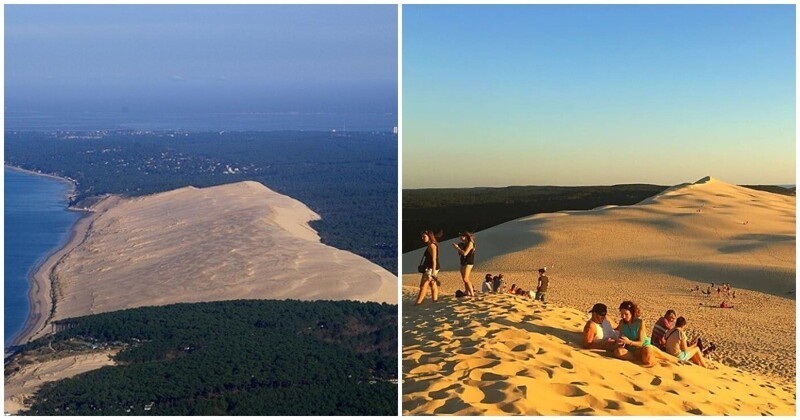
Yes, in Italy and Spain you can find dry areas, but You can hardly call them a desert. There are dunes in the Baltics, but this just small coastal strips. But there is still in Europe a sandy desert. Or rather, a huge dune located in France. 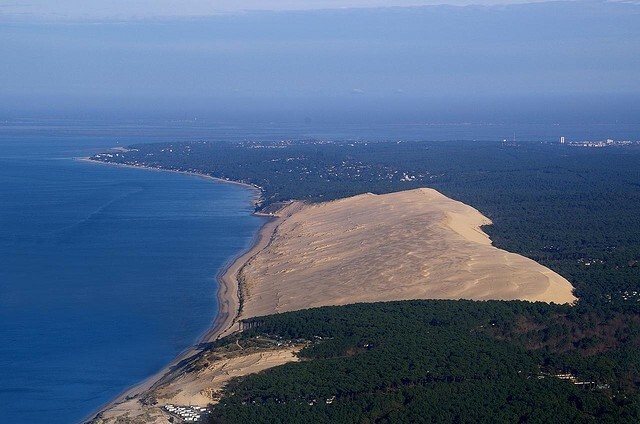
It is located on the coast of the Bay of Biscay near Bordeaux and called Pila. 3 kilometers of sand go more than 600 meters into coast depth.
It appeared 3.5 thousand years ago and is constantly growing. because of Pyla's coastline increases in forest receding five meters each year. 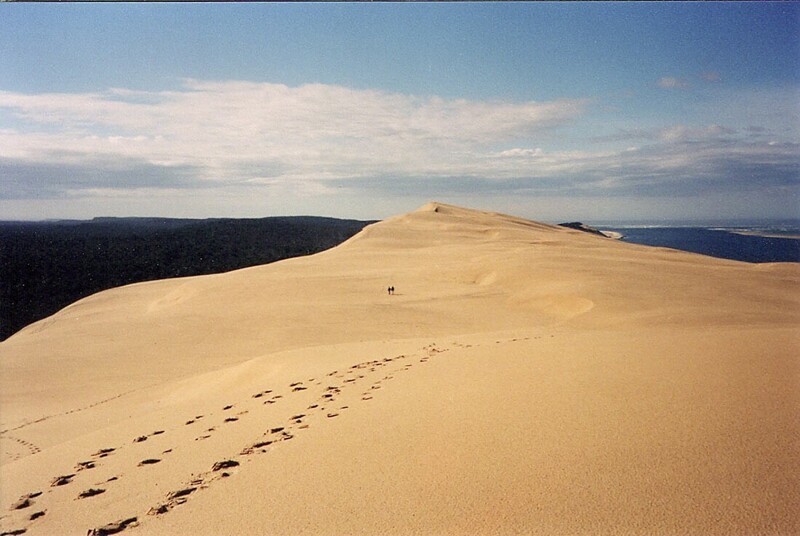
In the 17th century, the Pyla was only 40 meters high. Today the sand layer is from 100 to 120 meters (depending on the time of the year).
70 years ago, Pila swallowed up almost 20 private houses. In the 1980s, she ate an entire road.
But where did this arid zone come from in the green forests of France? 
Guilty can be considered the Garonne River. Every year she takes out tons sand, as, indeed, any other big water. But the area is relief that at low tide a sandbank is exposed. And here all the time west winds blow, then they throw sand on a strip of land to the side from the mouth of the river. 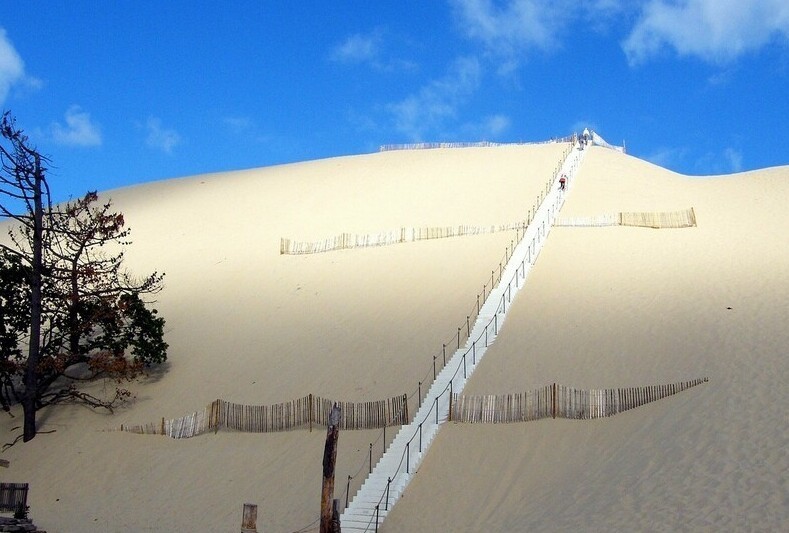
At first it was small sandy strips. But over 3.5 thousand years they have grown together into one huge dune.
The eastern slope is steep - about 30 degrees, because the western the wind keeps throwing sand at him. Periodically the dune crumbles to the east, taking more and more territory. 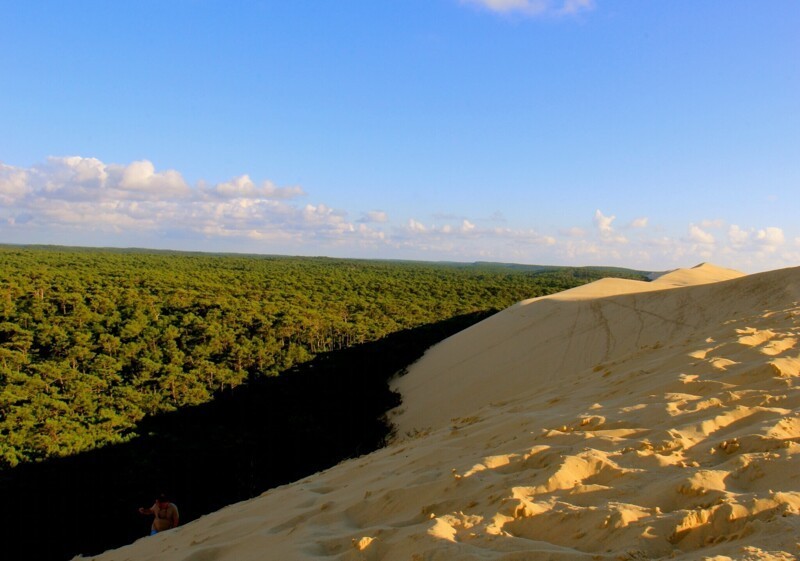
The saw has been a problem for the locals for 200 years. Sand buried under forest and valuable agricultural land. Napoleon issued an order stop the dune and on the joint efforts at the top and along the perimeter planted a large number of coastal pines.
The trees managed to secure the Jigsaw for a while. But at about In 1860, part of the dune collapsed, destroying all plantations and the sand again became attack the forest. 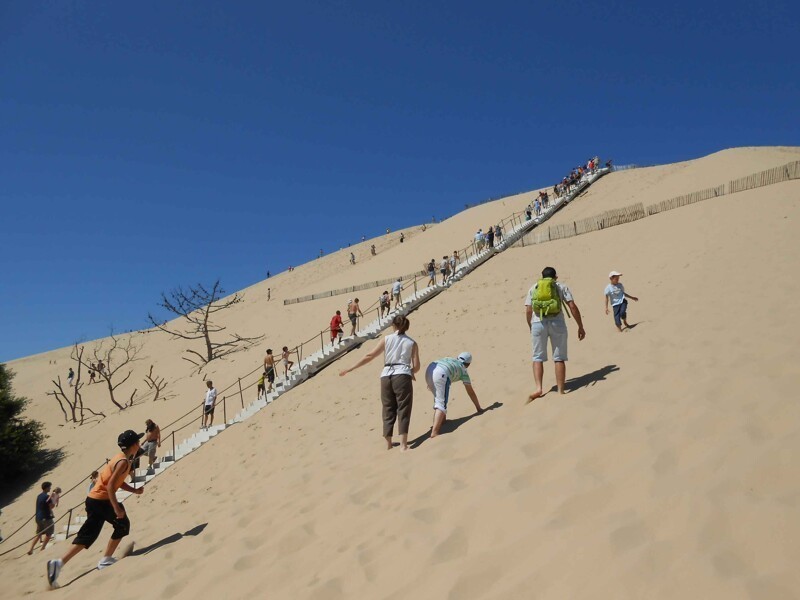
Local residents today are not so bad about Pyla as they used to be, because it has become an interesting tourist attraction.
2 million people a year visit the dune. And thanks to tourists to the treasury region receives about 11 billion euros directly. And through the development hospitality industry, tax collection and job availability - up to 160 million annually.






















